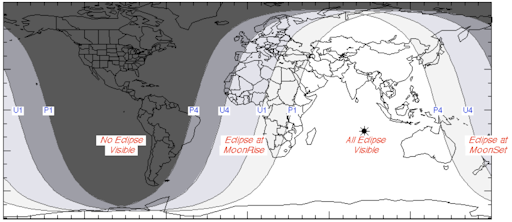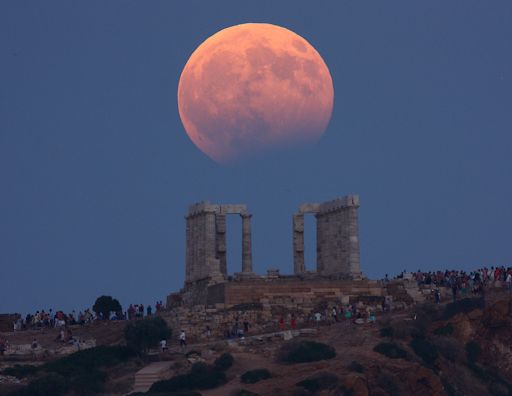25% van de maan zal op het hoogtepunt verduisterd zijn
On Monday, Aug. 7th, the Moon will pass through the shadow of Earth, slightly off-center, producing a partial lunar eclipse. At maximum (1820 UT), about 25% of the lunar disk will be in shadow. The 2-hour event is best seen from India, China, Australia, and other countries of Earth's eastern hemisphere. This animation created by graphic artist Larry Koehn shows how the Moon's appearance will change:Sky watchers in the Americas will see ... just an ordinary full Moon, completely illuminated. According to folklore, it's the Sturgeon Moon, named by Native American tribes of the Great Lakes who caught lots of these fish during the month of August. Lake sturgeon are considered to be living fossils because they have survived virtually unchanged for more than 150 million years. A full Moon named after an ancient slimy fish? It's prettier than it sounds

North Americans who miss this eclipse will get a great consolation prize two weeks from now: A total eclipse of the sun. On Aug. 21, 2017, the new Moon will pass directly in front of the sun. The Moon's cool dark shadow will lance down and touch the surface of the Earth, raking the USA from Oregon to South Carolina. People inside the path of totality will see the rarest of celestial wonders: Baily's beads, the Diamond Ring, and the sun's ghostly corona. Check ShadowandSubstance.com for a complete set of animated maps.
Bron: http://www.spaceweather.com/
https://live.slooh.com/shows/event-details/447
Partial #lunareclipse from 87°E
— Artyom Chitailo (@tty72) 8 augustus 2017
Частное лунное #затмение c 87-й долготы
(200 мм, EOS 40D) pic.twitter.com/cR0OvqfyVV
Watch a timelapse of the partial lunar eclipse over the Temple of Poseidon in Greece #LunarEclipse pic.twitter.com/idMitUzOp5
— RT (@RT_com) 8 augustus 2017
today's partial #lunareclipse clouds and roadblocks were not able to stop me! pic.twitter.com/SSLaqqsEV0
— Philipp Salzgeber (@astro_graph) 7 augustus 2017

 Vandaag gedeeltelijke maansverduistering
Vandaag gedeeltelijke maansverduistering






